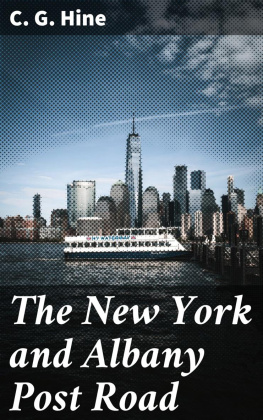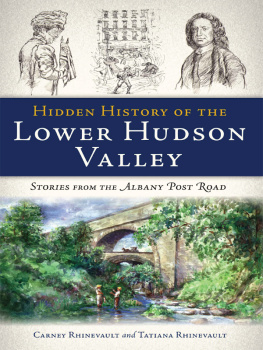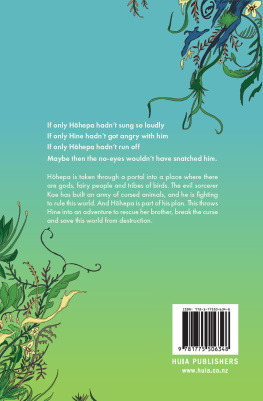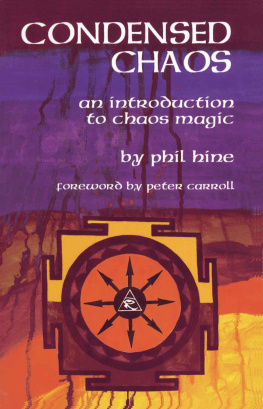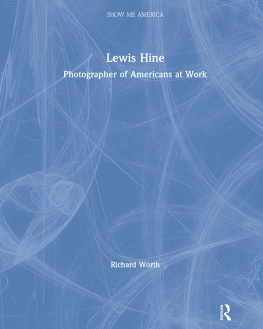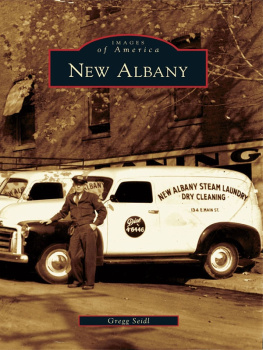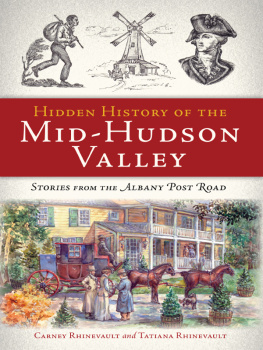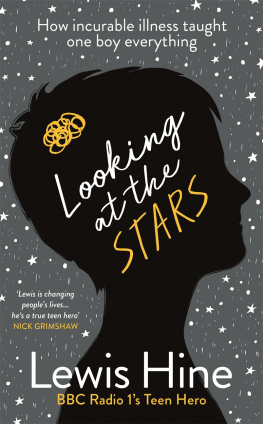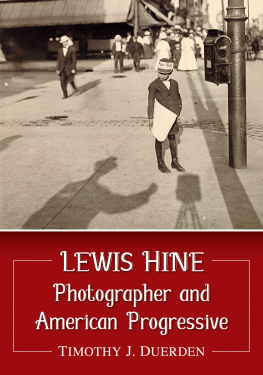Foreword.
Table of Contents
The Hudson Valley, above all other places in this country, combines historic and romantic interest with the beauties of nature. It is one hundred and fifty miles crowded with the splendors of mountain and forest and river, and replete with incident and legend. To quote George William Curtis: "Its morning and evening reaches are like the lakes of a dream." Everyone who visits New York comes or goes, if possible, by the river route. Few know much of anything, however, about the Old Post Road, that one-time artery of travel and trade, whose dust has been stirred by the moccasin of the Indian and the boot of the soldier; whose echoes are the crack of the stage driver's whip and the whistle of the startled deer; whose bordering hills were named for the wild boar and the wild cat, and along whose edges are still scattered the interesting relics of a past that the passenger by steamer or rail can never know.
Take it in May or June when all nature is fresh and green, with fleecy clouds above, and below a bank of wild azalea or an apple orchard in bloom. Or try it in the Fall when the woods are as gay as the painted butterfly. Each season holds out its own attractions.
Few places can equal the Hudson Valley for the Autumn panorama. The brilliant colors of the deciduous foliage intermingled with the dark of the evergreens rise from the blue of the river to the blue of heaven with every variety of tree and shrub to lend a hand in the illumination. It is red gold and yellow gold, purple and fine linen, and all manner of precious stones when the sun puts a crown of glory on some great tulip or sparkles in the gorgeous maple leaves. The colors are so splendid that even Turner, in all his glory, could not equal one of these.
There is no office at which to buy a ticket for this Post Road route. It is Shanks' mare, with an independence and freedom that no other mode of travel knows. To be sure, one can also take it on horseback, by bicycle or automobile, according to fancy and finances, and, provided he does not exceed the speed limit, it matters little how he goes. The speed limit naturally differs with the individual. The writer thinks that three miles an hour is fast enougha pace that enables one to keep his eyes on the picture and does not necessitate a continuous inspection of the road.
Naturally the weather plays its part in such an open air journey, and this is particularly the case if the trip be made on foot. It is the loss of the landscape, blotted out by the mist, rather than the physical discomfort of being caught in a rain squall, that counts. In fact, if one is protected by a light rubber cape, and will take the storm philosophically with a mind to enjoy it and rise superior to the drip on his knees, there is huge satisfaction in being alone with the patter of the rain. But the loss of the landscape is serious in such country as the Post Road deals with. An instance of this comes vividly to mind in connection with the Wiccopee Pass and the plain south of Fishkill. As I first saw it of a perfect June evening, it was as delicately beautiful as a bit of silver filigree, but another time, in September, the mist hung low on the mountains. It was either raining, or had just stopped, or was about to begin again, and it had been doing that or worse all day and the day before, and that which had been a delight in June was now a matter of so many miles to be disposed of as quickly as possible. There is a local expression in these parts, applied to certain phases of the weather: "As black as a black hat", which one can better appreciate after he has seen the scowl with which an Autumn storm can sweep down these mountains. Good May or June weather and the soft delight of Indian Summer are equally enjoyable, but avoid the Ides of March, or, in other words, the days of the equinoctial.
The amount of baggage is best decided after one has tramped it a bit. At first the tendency is to take the various little luxuries that are so necessary at home, but after they have been pulling at the shoulders all day long and the unaccustomed strain has developed possibilities in the way of aches undreamed of before, the conviction is gradually forced on the wayfarer that every ounce counts, and next time many of the "necessities" are left behind. A light suit of pajamas, a pair of extra sox and a thin rubber cape are greatly to be desired. A wash rag, nail brush and small piece of soap, tooth brush, comb and shaving outfit, extra eye glasses, small corkscrew and court plasterall these can be carried in a "tourist's bag" slung from one shoulder, and these are enough, with a bit of talcum powder and vaseline for chafed spots. Over the other shoulder hang a small, light camera and take the Post Road home with you to dream o'er of Winter nights.
New York to Albany by the Old Post Road.
Table of Contents
In 1703 the Provincial Legislature passed a "Publick Highways" act, part of which reads as follows:
"Publick and Common General Highway to extend from King's Bridge in the County of Westchester through the same County of Westchester, Dutchess County and the County of Albany, of the breadth of four rods, English measurement, at the least, to be, continue and remain forever, the Publick Common General Road and Highway from King's Bridge aforesaid to the ferry at Crawlier over against the city of Albany."
This, being in the reign of Queen Anne, was at first known as the Queen's Road, but in due time became known as the Albany Post Road.
Stages for the north originally started from Cortland Street; later the starting point was moved up to Broadway and Twenty-first Street, and as other means of conveyance improved and multiplied, the point for starting was moved north and further north until finally the railroad was finished through to Albany and the stage coach was a reminiscence of bygone times.
It is "159 m. from N. York" to Albany by the Post Road, as the old mile stones figure it. When they were set up, a hundred years or so ago, New York City was south of the present City Hall, and one can get some idea of the city's growth when he knows that there still exists on Manhattan Island a stone imbedded in a bordering wall along Broadway, and in about its proper place, in the neighborhood of Two Hundred and Fifteenth Street, which reads "12 miles from N. York."
KING'S BRIDGE.
This trip starts with King's Bridge, built by Frederick Philipse in 1693. That bridgewhich, like Mark Twain's jackknife, that had had two new handles and six new blades, but was still the same old jackknifestill connects Manhattan Island with the main land, being supported on stone piers that are said to be the original ones used. There is but one other bridge in the entire trip to Albany that can rival its antique and aged appearance, and that crosses the Roeloff Jansen Kill in Columbia County. Just East of the King's Bridge was the "wading place" of the Indians, and later of the Dutch, where the valiant Anthony Van Corlear met his fate, and, according to Irving, gave the stream its present name.
To one who likes to speculate as to what might have been, had things been different, King's Bridge affords large opportunity for thought. It seems always to have been a favorite haunt of the human race, its encircling hills and accessibility by water no doubt being responsible for this popularity. Extensive beds of oyster shells testify to former Indian occupancy, and the Dutch appear to have shown the same preference for this quiet nook, though they finally pitched their tents at the lower end of the island which furnished larger opportunity for trade. If the city had been established here, would we to-day be taking our pleasure jaunts into the country where now is the Battery, and would our antiquarians still be discovering Indian remains in that region?



